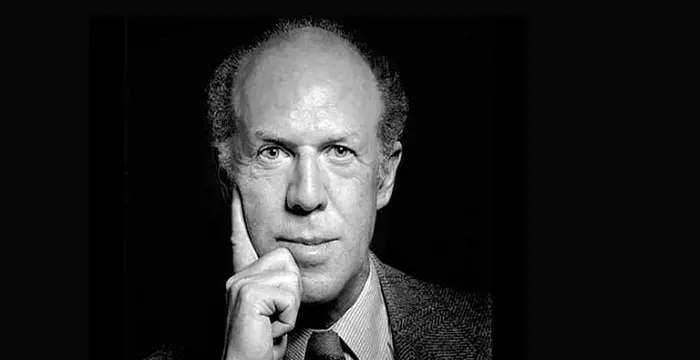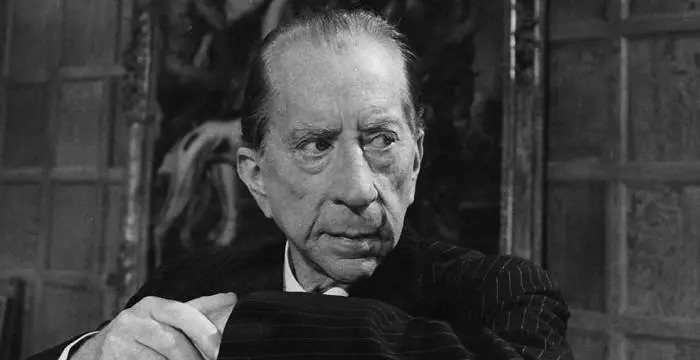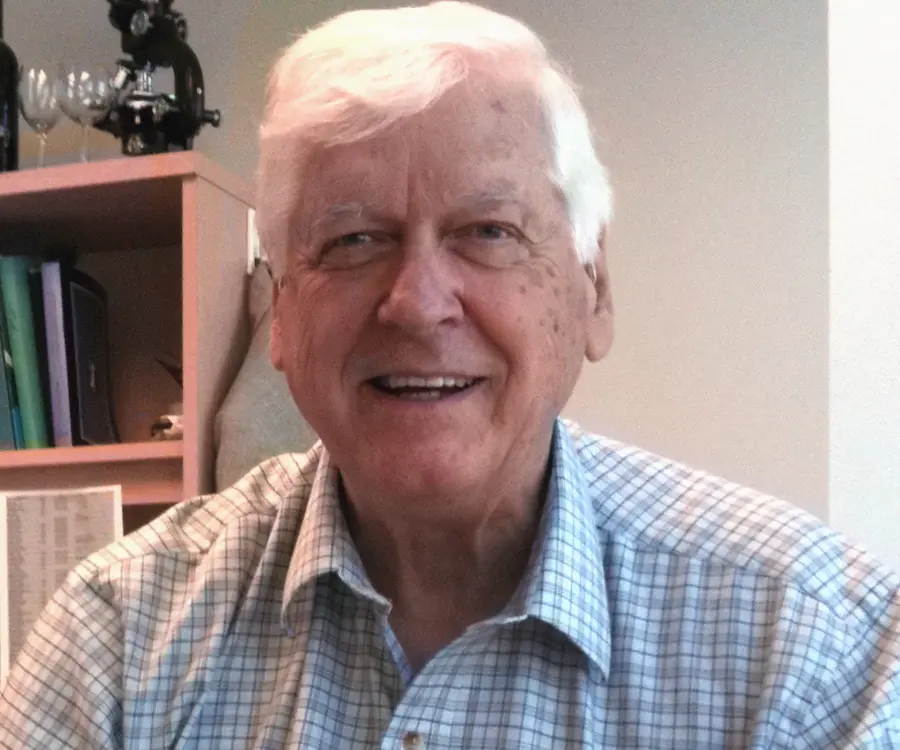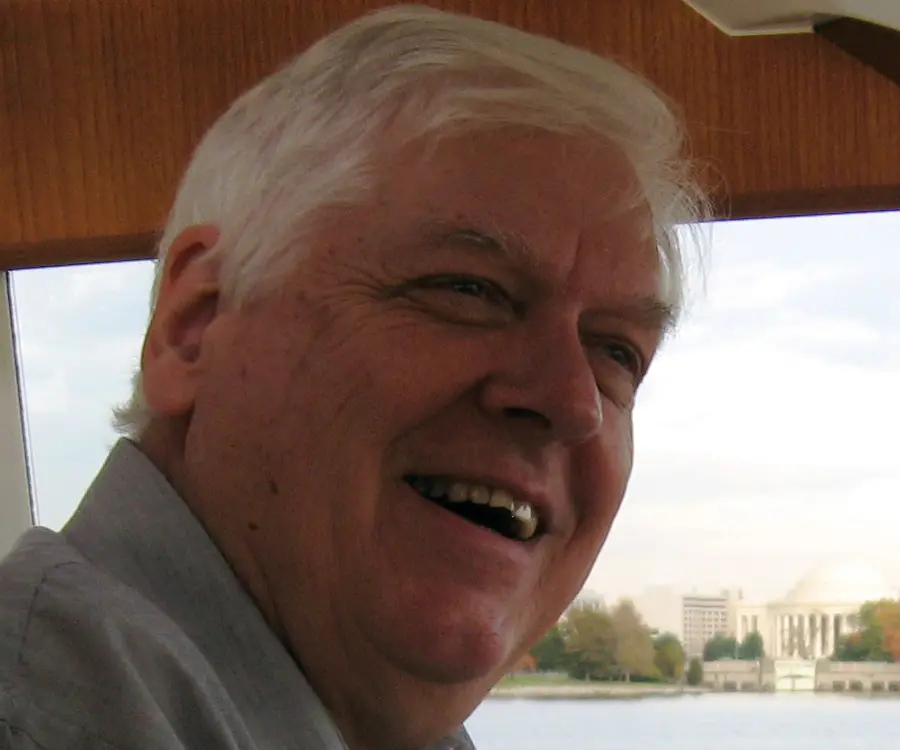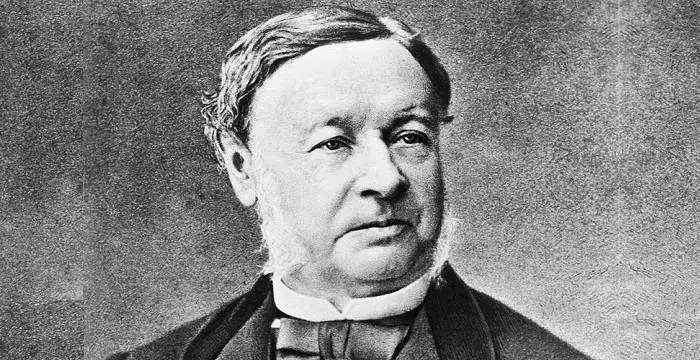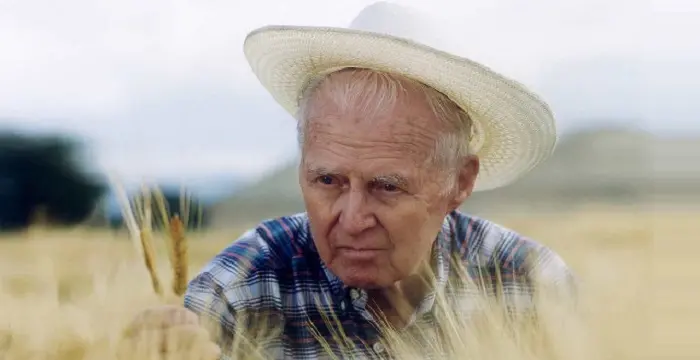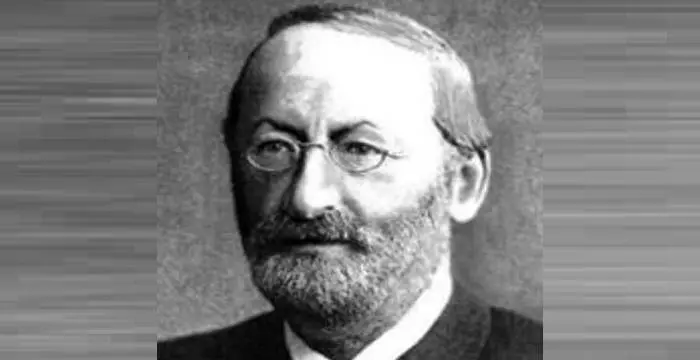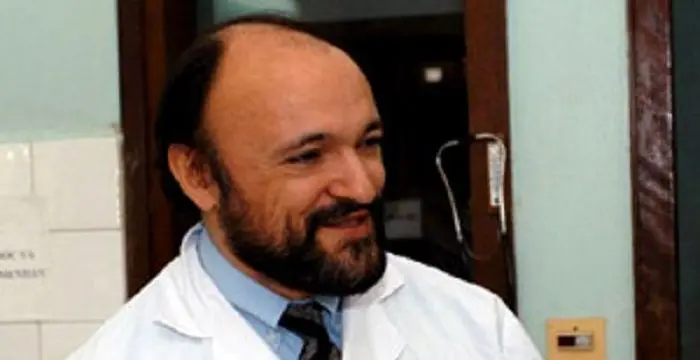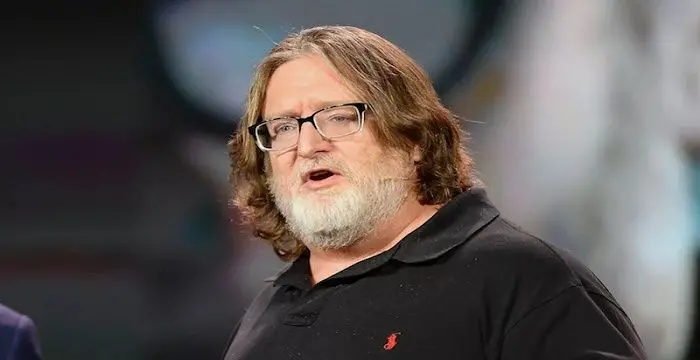
Hamilton O. Smith - Microbiologists, Birthday and Family
Hamilton O. Smith's Personal Details
Hamilton Othanel Smith is an American microbiologist who received the Nobel Prize for Physiology or Medicine in 1978
| Information | Detail |
|---|---|
| Birthday | August 23, 1931 |
| Nationality | American |
| Famous | University Of California, Berkeley, Scientists, Biologists, Microbiologists |
| Spouses | Elizabeth Anne Bolton |
| Known as | Hamilton Othanel Smith |
| Universities |
|
| Notable Alumnis |
|
| Birth Place | New York City, New York |
| Gender | Male |
| Father | Bunnie Othanel Smith |
| Mother | Tommie Naomi Harkey |
| Sun Sign | Leo |
| Born in | New York City, New York |
| Famous as | Microbiologist |
// Famous University Of California, Berkeley
Susan Sontag
Susan Sontag is an American critical essayist, cultural analyst, novelist, political activist, filmmaker and playwright of international repute. Read on to find out more about her childhood, career, profile and timeline.
Gerard Debreu
Gerard Debreu was a French-born American economist who brought mathematical precision to economics. Check out this biography to know about his childhood, family life, achievements and other facts related to his life.
J. Paul Getty
J. Paul Getty was an American billionaire businessman and president of the Getty Oil Company. This biography offers detailed information about his childhood, life, career and timeline.
Hamilton O. Smith's photo
Who is Hamilton O. Smith?
Hamilton Othanel Smith is a microbiologist from America who received the Nobel Prize for Physiology or Medicine in 1978. He shared the prize with two other microbiologists for the discovery of ‘restriction enzymes’ that could divide the DNA in a cell into smaller pieces so that its construction could be studied more easily. The other two microbiologists who shared the prize with him were Werner Arber from Switzerland and Daniel Nathans from America. The ‘restriction enzymes’ discovered by Smith was a new type of enzyme that could recognize a certain sequence of nucleotides in a DNA or ‘deoxyribonucleic acid’ molecule and could cut the molecule at that very point. This discovery laid the foundation for using ‘restriction enzymes’ as a tool in genetics and microbiology for studying the DNA of different kinds of biological systems in later experiments. Arber and other microbiologists had already found that one type of ‘restriction enzymes’ recognizes DNA sequences and cuts them up at random points but not at the point of recognition. Smith and his colleagues discovered the second type of ‘restriction enzymes’ while studying the ‘Haemophilus influenzae’ bacteria that not only recognizes a specific point of the DNA molecule but also cuts it exactly at the same point.
// Famous Biologists
Juliane Koepcke
Juliane Koepcke is a German-Peruvian biologist, who was the lone survivor among the 92 passengers and crew of the ill-fated LANSA Flight 508 that crashed in the Peruvian rainforest on 24 December 1971. Know more about her life in this biography.
Theodor Schwann
Theodor Schwann was a German physiologist who discovered the Schwann cells in the peripheral nervous system. This biography of Theodor Schwann provides detailed information about his childhood, life, achievements, works & timeline.
Norman Borlaug
Norman Borlaug was an American biologist known as the “Father of the Green Revolution”. This biography of Norman Borlaug provides detailed information about his childhood, life, achievements, works & timeline.
Childhood & Early Life
Daniel O. Smith was born on August 23, 1931 in New York, USA. His father, Bunnie Othanel Smith was an Assistant Professor of Education at the ‘University of Florida’ at Gainesville, and his mother, Tommie Naomi Harkey was a school teacher.
He has an elder brother named Norman.
Both his parents were from simple background. His father had taken leave from the university and had joined ‘Columbia University’ in New York City to pursue his doctoral studies when Hamilton was born.
His family moved to Champaign-Urbana, Illinois when his father joined the ‘Department of Education’ at the ‘University of Illinois’.
Smith spent his entire boyhood at Champagne-Urbana which was relatively detached from general affairs like the Great Depression and the World War II.
He attended the ‘University Laboratory High School’ of Urbana, Illinois where most of the students were very talented and drawn from the families belonging to the university faculty.
He completed high school in three years with help from his chemistry and physics teacher Wilbur E. Hamish, Vynce Hines who taught him plane geometry and Miles C. Hartley who taught him algebra.
After high school he matriculated with mathematics as a major subject from the ‘University of Illinois’ but was undecided about his further studies. He started studying the central nervous system when his brother introduced him to a book written by a biophysicist, Rashevsky related to its mathematical modeling.
He joined the ‘University of California’ at Berkeley in 1950 where he interest in biochemistry, biology and cell physiology.
Smith did his graduation from the University of California, Berkeley in 1952 and received a bachelor’s degree in mathematics from there.
After deciding on a medical career, Smith applied to the ‘John Hopkins University Medical School’ in Baltimore, Maryland and joined the institute in 1952.
In 1956 he earned his M.D. from the ‘John Hopkins University’ and proceeded to the ‘Barnes Hospital’ in St. Louis for his medical internship.
Career
Hamilton O. Smith joined the Navy when he was drafted into the Armed Forces in July 1957 and completed a two year stint in San Diego, California. He developed interest for genetics during this time.
In 1959 he moved to Detroit, Michigan with his wife and one-year old son and joined the ‘Henry Ford Hospital’ to complete his medical residency training. Here he found his calling when he came across books on ‘bacteriophage’ and molecular biology written by Mark Adams and others.
After getting a N.I.H. postdoctoral fellowship, he joined the ‘Department of Human Genetics’ at the ‘University of Michigan’ at Ann Arbor in 1962 after his residency training. He started to work on the ‘Salmonella Phage P22 lysogeny’ with another geneticist, Mike.
In 1965 they discovered the gene which controlled the prophage attachment and by 1967 Smith was able to publish his findings.
He returned to ‘John Hopkins’ in 1967 where he joined the ‘Department of Microbiology’ as an Assistant Professor of Microbiology and has been there ever since.
He discovered the first type-II ‘restriction enzyme’ that could break up the DNA molecule at particular points in 1968.
In 1973 he became a full professor of microbiology in the microbiology department.
During the period 1975-1976 he received a ‘Guggenheim Fellowship’ and worked with Max Birnstiel at the ‘University of Zurich’ in Switzerland on the sequencing and arrangements of the ‘histone gene’.
In 1995 Smith was successful in sequencing the genome of the ‘Haemophilus influenzae’ bacteria at ‘The Institute for Genomics Research’ or ‘TIGR’ with help of other researchers.
He left ‘John Hopkins’ in 1998 and joined ‘Celara Genomics Corporation’ which was involved in research with private funding. He helped in the efforts being made there for the genomic sequencing in ‘fruit flies’ or ‘Drosophila’ and human beings.
He became the scientific director of the ‘Institute for Biological Energy Alternatives’ or ‘IBEA’ situated in Maryland in 2002. His basic research at this institute was on the production of a synthetic organism with a single cell that could survive and reproduce on its own. The main aim of this research was to find out the minimum number of genes that would be required to sustain life.
In 2006 Smith became the head of the synthetic biology and biological energy research group of the ‘J. Craig Venter Institute’ which was formed by merging TIGR and IBEA.
He is currently holding the post of scientific director at privately owned ‘Synthetic Genomics’ and is busy with research on bio-fuels.
Major Work
In 1970, Hamilton Smith published his first book ‘A restriction enzyme from Hemophilus Influenza. 1. Purification and general projects’ in collaboration with Kent W. Wilcox.
His second book ‘A restriction enzyme from Hemophilus influenza. 11. Base sequence of the recognition site’ in collaboration with T. J. Kelly was published in 1970.
His third and fourth books in collaboration with P. H. Roy titled ‘The DNA methylases of Hemophilus influenza Rd. 1. Purification and properties’, and ‘The DNA methylases of Hemophilus influenzae Rd. 11, Partial recognition site base sequences’, were published in 1973.
Awards & Achievements
Hamilton Smith received the Nobel Prize in Physiology or Medicine in 1978.
Personal Life & Legacy
Hamilton O. Smith married Elizabeth Anne Bolton, a nursing student from Mexico City in 1956 after joining the JHU medical school where he met her.
He has four sons and a daughter from the marriage.
Trivia
Hamilton Smith loves to play the piano and listen to classical music during his spare time.
// Famous Microbiologists
Ferdinand Cohn
Ferdinand Cohn was a German biologist who is considered as the father of bacteriology and microbiology. Check out this biography to know about his childhood, life, achievements, works & timeline.
Louis Pasteur
Louis Pasteur was a French chemist and microbiologist who developed the first vaccines for rabies and anthrax. This biography of Louis Pasteur provides detailed information about his childhood, life, achievements, works & timeline.
Carlo Urbani
Italian epidemiologist Carlo Urbani was the first person who identified SARS as a highly contagious disease. Find out more about his life in this biography.
Hamilton O. Smith's awards
| Year | Name | Award |
|---|---|---|
Other | ||
| 0 | Nobel Prize in Physiology or Medicine in 1978 | |
Hamilton O. Smith biography timelines
- // 23rd Aug 1931Daniel O. Smith was born on August 23, 1931 in New York, USA. His father, Bunnie Othanel Smith was an Assistant Professor of Education at the ‘University of Florida’ at Gainesville, and his mother, Tommie Naomi Harkey was a school teacher.
- // 1950He joined the ‘University of California’ at Berkeley in 1950 where he interest in biochemistry, biology and cell physiology.
- // 1952Smith did his graduation from the University of California, Berkeley in 1952 and received a bachelor’s degree in mathematics from there.
- // 1952After deciding on a medical career, Smith applied to the ‘John Hopkins University Medical School’ in Baltimore, Maryland and joined the institute in 1952.
- // 1956In 1956 he earned his M.D. from the ‘John Hopkins University’ and proceeded to the ‘Barnes Hospital’ in St. Louis for his medical internship.
- // 1956Hamilton O. Smith married Elizabeth Anne Bolton, a nursing student from Mexico City in 1956 after joining the JHU medical school where he met her.
- // Jul 1957Hamilton O. Smith joined the Navy when he was drafted into the Armed Forces in July 1957 and completed a two year stint in San Diego, California. He developed interest for genetics during this time.
- // 1959In 1959 he moved to Detroit, Michigan with his wife and one-year old son and joined the ‘Henry Ford Hospital’ to complete his medical residency training. Here he found his calling when he came across books on ‘bacteriophage’ and molecular biology written by Mark Adams and others.
- // 1962After getting a N.I.H. postdoctoral fellowship, he joined the ‘Department of Human Genetics’ at the ‘University of Michigan’ at Ann Arbor in 1962 after his residency training. He started to work on the ‘Salmonella Phage P22 lysogeny’ with another geneticist, Mike.
- // 1965 To 1967In 1965 they discovered the gene which controlled the prophage attachment and by 1967 Smith was able to publish his findings.
- // 1967He returned to ‘John Hopkins’ in 1967 where he joined the ‘Department of Microbiology’ as an Assistant Professor of Microbiology and has been there ever since.
- // 1968He discovered the first type-II ‘restriction enzyme’ that could break up the DNA molecule at particular points in 1968.
- // 1970In 1970, Hamilton Smith published his first book ‘A restriction enzyme from Hemophilus Influenza. 1. Purification and general projects’ in collaboration with Kent W. Wilcox.
- // 1970His second book ‘A restriction enzyme from Hemophilus influenza. 11. Base sequence of the recognition site’ in collaboration with T. J. Kelly was published in 1970.
- // 1973In 1973 he became a full professor of microbiology in the microbiology department.
- // 1973His third and fourth books in collaboration with P. H. Roy titled ‘The DNA methylases of Hemophilus influenza Rd. 1. Purification and properties’, and ‘The DNA methylases of Hemophilus influenzae Rd. 11, Partial recognition site base sequences’, were published in 1973.
- // 1975 To 1976During the period 1975-1976 he received a ‘Guggenheim Fellowship’ and worked with Max Birnstiel at the ‘University of Zurich’ in Switzerland on the sequencing and arrangements of the ‘histone gene’.
- // 1978Hamilton Smith received the Nobel Prize in Physiology or Medicine in 1978.
- // 1995In 1995 Smith was successful in sequencing the genome of the ‘Haemophilus influenzae’ bacteria at ‘The Institute for Genomics Research’ or ‘TIGR’ with help of other researchers.
- // 1998He left ‘John Hopkins’ in 1998 and joined ‘Celara Genomics Corporation’ which was involved in research with private funding. He helped in the efforts being made there for the genomic sequencing in ‘fruit flies’ or ‘Drosophila’ and human beings.
- // 2002He became the scientific director of the ‘Institute for Biological Energy Alternatives’ or ‘IBEA’ situated in Maryland in 2002. His basic research at this institute was on the production of a synthetic organism with a single cell that could survive and reproduce on its own. The main aim of this research was to find out the minimum number of genes that would be required to sustain life.
- // 2006In 2006 Smith became the head of the synthetic biology and biological energy research group of the ‘J. Craig Venter Institute’ which was formed by merging TIGR and IBEA.
// Famous Scientists
Juliane Koepcke
Juliane Koepcke is a German-Peruvian biologist, who was the lone survivor among the 92 passengers and crew of the ill-fated LANSA Flight 508 that crashed in the Peruvian rainforest on 24 December 1971. Know more about her life in this biography.
Henry Cavendish
Henry Cavendish was a theoretical chemist and physicist, renowned for discovery of hydrogen and calculation of the mass of earth. To know more about his childhood, profile, timeline and career read on
Konstantin Tsiolkovsky
Konstantin Tsiolkovsky was a Russian rocket scientist and a pioneer of astronautics. This biography provides detailed information about his childhood, family, personal life, career, achievements, etc.
Gabe Newell
Gabe Newell is an American computer programmer and businessman, best known as the co-founder of ‘Valve Corporation.’ This biography provides detailed information about his childhood, family, personal life, career, etc.
Grigori Perelman
Grigori Perelman is a Russian mathematician who is best known for his contributions to Riemannian geometry and geometric topology. Check out this biography to know about his childhood, family life, achievements and fun facts about him.
Eduardo Saverin
Eduardo Luiz Saverin is a Brazilian internet entrepreneur and investor. This biography profiles his childhood, life, career, achievements, and timeline
Hamilton O. Smith's FAQ
What is Hamilton O. Smith birthday?
Hamilton O. Smith was born at 1931-08-23
Where is Hamilton O. Smith's birth place?
Hamilton O. Smith was born in New York City, New York
What is Hamilton O. Smith nationalities?
Hamilton O. Smith's nationalities is American
Who is Hamilton O. Smith spouses?
Hamilton O. Smith's spouses is Elizabeth Anne Bolton
What was Hamilton O. Smith universities?
Hamilton O. Smith studied at University Of California, Berkeley, University of California, Berkeley, (BA), Johns Hopkins School of Medicine, (MD)
What was Hamilton O. Smith notable alumnis?
Hamilton O. Smith's notable alumnis is University Of California, Berkeley
Who is Hamilton O. Smith's father?
Hamilton O. Smith's father is Bunnie Othanel Smith
Who is Hamilton O. Smith's mother?
Hamilton O. Smith's mother is Tommie Naomi Harkey
What is Hamilton O. Smith's sun sign?
Hamilton O. Smith is Leo
How famous is Hamilton O. Smith?
Hamilton O. Smith is famouse as Microbiologist

